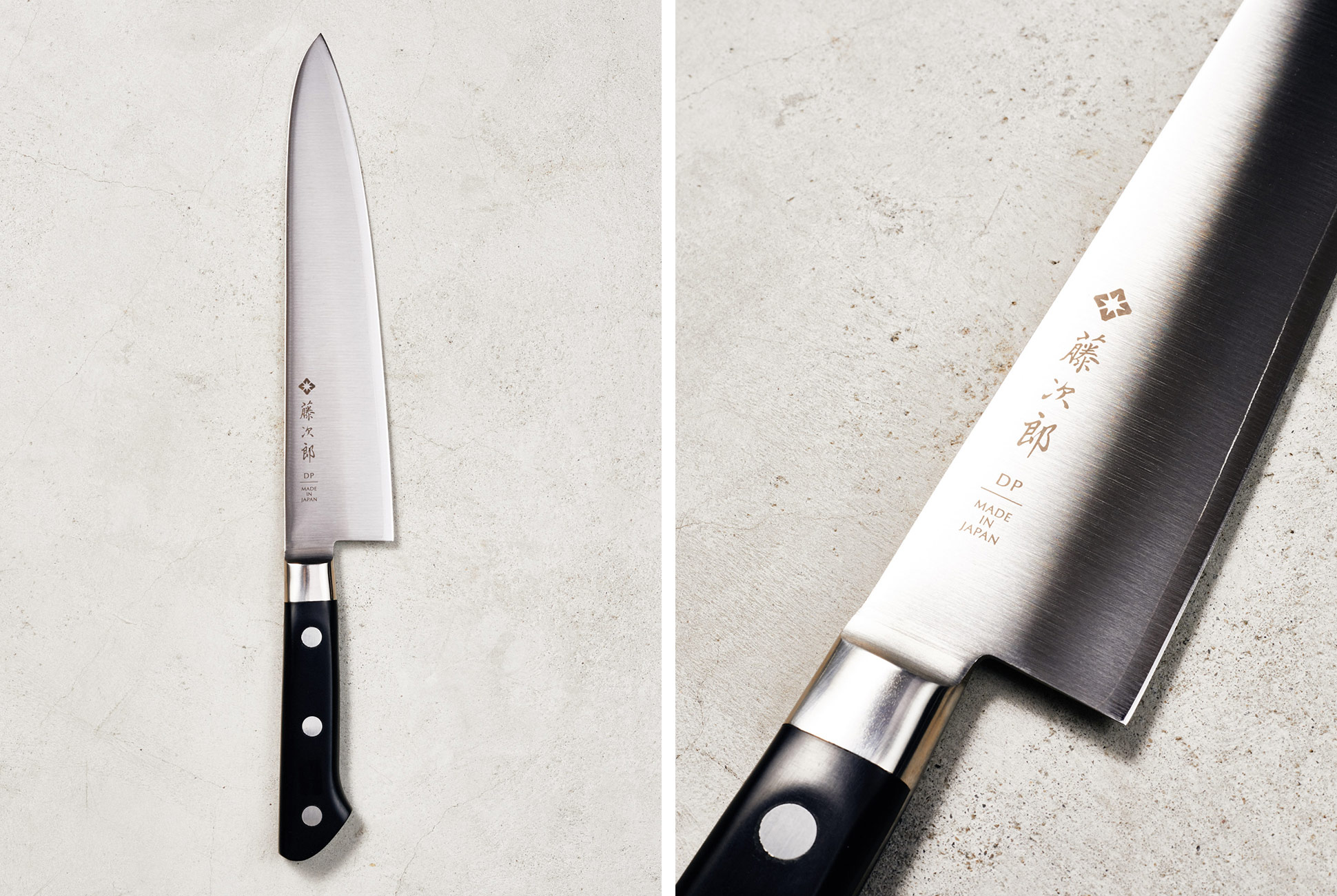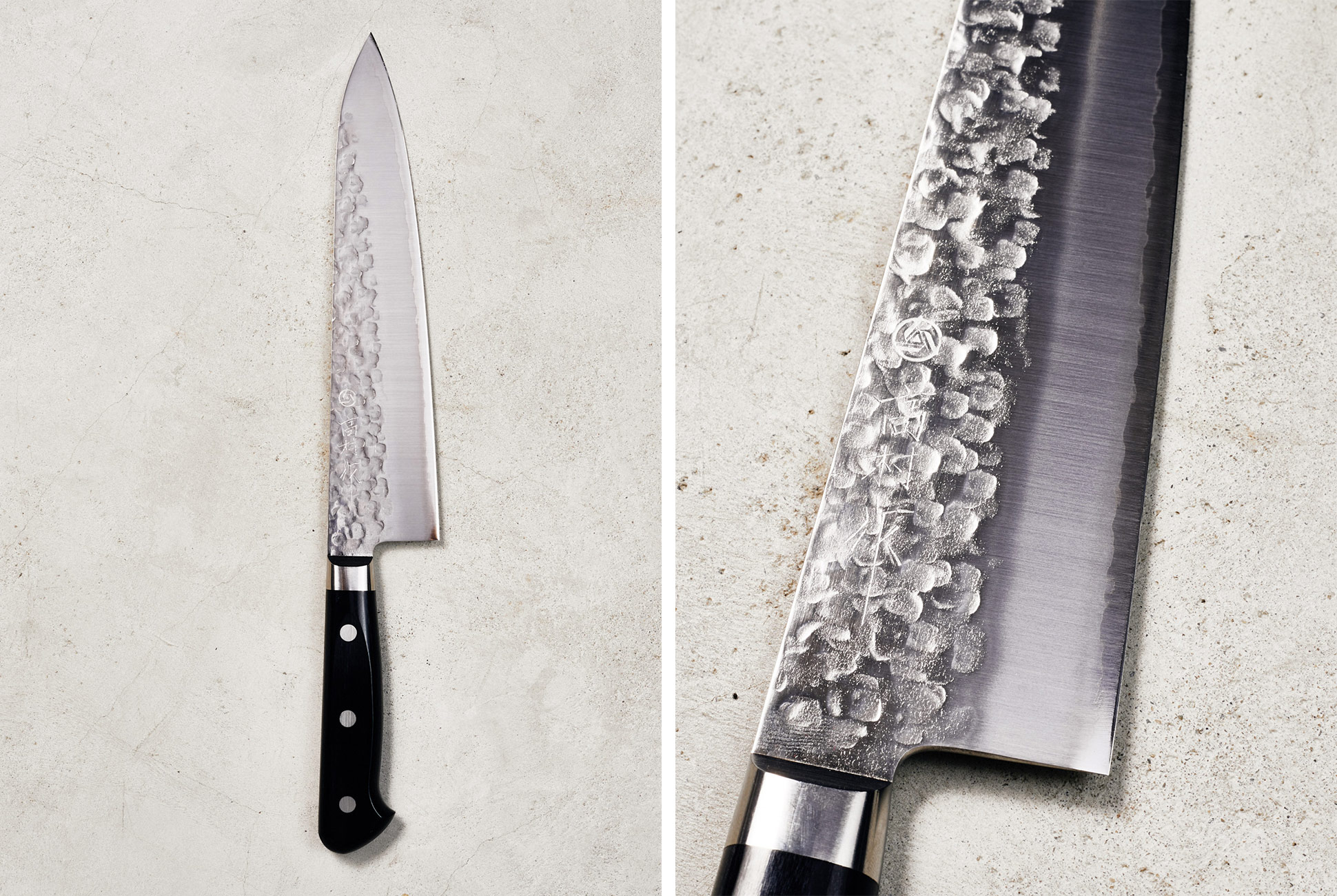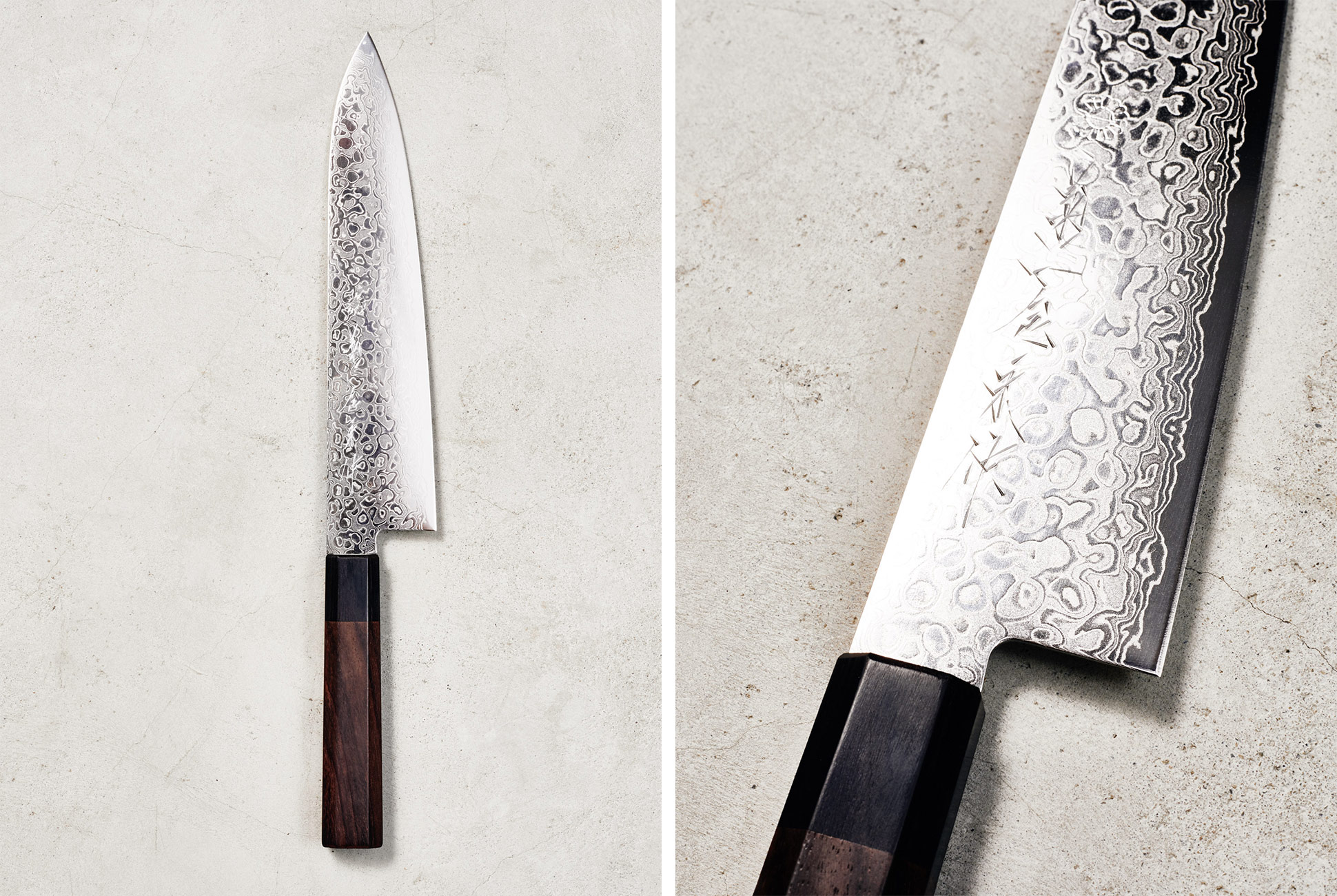“We obviously had a ton of experience with kitchen knives working in kitchens for so long. We’ve cooked with horrible tools and great tools, and, to us, the knives that come out of Japan are just on a different level,” Cox says.
The co-owners travel to Japan yearly to visit and learn from the makers of the knives they sell, as well as scout out newer, less known craftsmen in the country. Cox says, “Our main goal is to only sell knives that perform up to our standards, and maybe shed some light on the quality of work done by makers people wouldn’t get to see otherwise.”
According to Cox, they chose Japanese knives because of they see as an undying loyalty to performance above anything else. Traditionally, Japanese blades are sharper, thinner and lighter than their European counterparts (read more about this here). Here are three knives, at three different price points, that Cox recommends to chefs new and old.
Tojiro DP Series Gyuto

The most accessible of the three knives is a Good Design Award-winning, three-ply knife that, according to Cox, is “one of the best price-to-performance value knives we’ve tested or stocked.” Cox recommends it as good introductory knife for the aspiring chef or home cook, as the VG10 stainless steel makeup gives you the corrosion and wear resistance of a typical stainless steel and the hardness of a higher carbon steel.
Takamura Tsuchime Gyuto

Made in the Niigata Prefecture in Japan and in the traditional Japanese sanmai style, this Takamura knife is comprised of three layers of steel, the middle layer being the primary slicing area, while the top and bottom layers act as high-set secondary edges. “I’m selling $300, $400 and $500 knives that don’t perform to this standard,” Cox says.
Kikiuichi Nickel Damascus Gyuto

“You could write a book on this knife and the people who made it, but I think you get the idea by just looking at it,” Cox says. Kikiuichi is a 750-year-old bladesmithing house in the Nara Prefecture of Japan, but it’s only been making kitchen knives for the last century-and-a-half. Its website reads: “…the origins of our company go back to 13th century when the emperor Go-toba chose our family ancestor, Shiro Kanenaga, to be one of his swordsmiths. Because of the quality of his blades he was granted the right to use the royal symbol of the Chrysanthemum flower or Kiku-no-mon as a mark of their excellence on his blades. This symbol is still recognized in Japan for its connection to the royal family and you will find the Chrysanthemum flower on all our cutlery.” This particular Kikiuichi blade is fitted to an octagonal rosewood Wa handle. It also uses SUS410 steel and features a hammered nickel Damascus finish.

